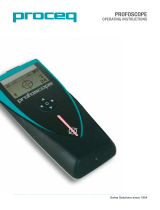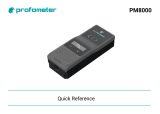4
As shown in Fig. 2, the relevant testing and evaluation methods are:
(a) British Standard 8539 Annex Ann. B.2.3.1 and B.2.3.2, Code of practice for
the selection and installation of post-installed anchors in concrete and
masonry, tests to determine the resistance and site testing regimes
(b) British Standard 8539 9.3 and Annex B, Code of practice for the selection
and installation of post-installed anchors in concrete and masonry, tests to
check the quality of installation and site testing regimes
HOW MANY ANCHORS / POST-INSTALLED REBARS
SHOULD BE TESTED?
There is no universal rule regarding the percentage of anchors or rebars that should
be tested, nor is there any existing statistical basis for the percentages usually
specified. Therefore, Hilti investigated again the existing national and European
standards to provide a proposal for the number of tests that should be done.
However, the numbers as given in Fig. 3 should be seen as an indication only as the
requirements for the proof load program may vary significantly from case to case.
Clearly, the number of anchors to be proof loaded for example is dictated by
structural safety as well as practical considerations and reason for testing. For
example, while it is typical on a large job to require that anywhere from 2.5 to 20
percent of the installed anchors of a given type and size be proof loaded, this
requirement must be adjusted where, say, only four large anchors in a baseplate are
to be verified. In such a case, it is not unreasonable to require that all four anchors be
proof loaded, particularly if the consequences of failure are significant.
For highly redundant applications and less critical applications such as rebar
doweling for shotcrete applications or slab on grade doweling, proof loading of a
minimum random sampling of 5% of the anchors may suffice. Ultimately, the
Engineer of Record should determine the sampling rates.
Hilti Engineers are available to advise you, but the decision remains
with the Engineer of Record


















